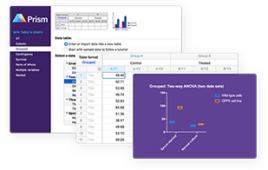 By now, most scientists—97% of them, to be exact—agree that the temperature of the planet is rising and that the increase is due to human activities such as fossil fuel use and deforestation. But until recently, the jury was still out regarding the variability surrounding that increase—for example, how much difference there will be between the hottest hot days from one year to the next, as well as with each year’s coldest cold days.
By now, most scientists—97% of them, to be exact—agree that the temperature of the planet is rising and that the increase is due to human activities such as fossil fuel use and deforestation. But until recently, the jury was still out regarding the variability surrounding that increase—for example, how much difference there will be between the hottest hot days from one year to the next, as well as with each year’s coldest cold days.
Some studies suggested an increase in variability, others a decrease. The problem with these results, said Evan Kodra, PhD’14, is that none of them took a systematic approach to gleaning that answer. Each was examining some other phenomenon—such as whether a particular region would experience overall warming—and the variability data was a secondary, but interesting, finding.
That’s why Kodra and his adviser Auroop Ganguly, a climate change expert and associate professor in Northeastern’s Department of Civil and Environmental Engineering, decided to take a different approach in their paper published online on Wednesday in the journal Scientific Reports, published by Nature. Their work was performed in Northeastern’s Sustainability and Data Sciences Laboratory run by Ganguly.
What they found may surprise some: While global temperature is indeed increasing, so too is the variability in temperature extremes. For instance, while each year’s average hottest and coldest temperatures will likely rise, those averages will also tend to fall within a wider range of potential high and low temperate extremes than are currently being observed.
This means that even as overall temperatures rise, we may still continue to experience extreme cold snaps, said Kodra, who earned the College of Engineering’s outstanding graduate research award in 2014 and is now leading data analytics efforts at Energy Points, an innovative Boston area startup.
That is an important point in the ongoing effort to accurately inform the public about climate change. “Just because you have a year that’s colder than the usual over the last decade isn’t a rejection of the global warming hypothesis,” Kodra explained.
The new results provide important scientific as well as societal implications, Ganguly noted. For one thing, knowing that models project a wider range of extreme temperature behavior will allow sectors like agriculture, public health, and insurance planning to better prepare for the future. For example, Kodra said, “an agriculture insurance company wants to know next year what is the coldest snap we could see and hedge against that. So, if the range gets wider they have a broader array of policies to consider.”
With funding from a $10-million multi-university Expeditions in Computing grant on understanding climate change, the duo used computational tools from Big Data science to systematically examine this aspect of climate change for the first time. This study did just that, bringing together a unique combination of computational data science tools tailored for extracting nuanced insights about climate extremes.
The research also opens new areas of interest for future work, both in climate and data science. It suggests that the natural processes that drive weather anomalies today could continue to do so in a warming future. For instance, the team speculates that ice melt in hotter years may cause colder subsequent winters, but these hypotheses can only be confirmed in physics-based studies.
The study used simulations from the most recent climate models developed by groups around the world for the Intergovernmental Panel on Climate Change and “reanalysis data sets,” which are generated by blending the best available weather observations with numerical weather models. The team combined a suite of methods in a relatively new way to characterize extremes and explain how their variability is influenced by things like the seasons, geographical region, and the land-sea interface. The analysis of multiple climate model runs and reanalysis data sets was necessary to account for uncertainties in the physics and model imperfections.
Asymmetry of projected increases in extreme temperature distributions
Source: Northeastern Univ.




